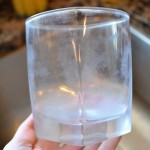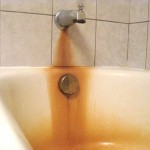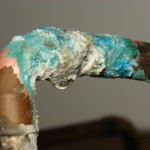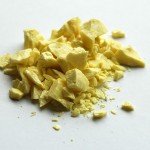To find the best water treatment solution, you must first understand your water. Do you have well or city? These water supplies greatly differ in diagnosis and the applications necessary to fix them.
Well Water
What is well water?
Well water is commonly found in suburban and rural areas. Homes with a well water supply that have no treatment or purification system to filter the well water are vulnerable to pollutants and dangerous contaminates due to the water being used from an untreated source.
What are common problems with well water?
Problems with well water vary depending on the area and location. Not every well will have the same problems even if the well water supply is in the same neighborhood. Common issues that home owners will experience have a wide range. Hard water, iron, acid, nitrates, sulfur, bacteria, radon, phosphates,are among the most common, however RoyalSoft systems are able to filter and decontaminate all problems found in well water.
What pollutants are in well water?
Like city water, well water also shares a wide range of pollutants that can contaminate your well water supply. Pollutants such as methyl tert-butyl ether commonly known as MTBE’s which are used as a fuel component for gasoline engines and are known carcinogens as well as pose other health risks are commonly present in well water. Other pollutants hazardous to your health such as pesticides and weed killers are also found in well water supplies.
City Water
What is city water?
City/municipal water is the most common water supply to homes and commercial buildings in the United States. The water supply is usually taken from reservoirs and other water sources where it is pipe-lined to a water treatment plant and sterilized with multiple chemical mixtures.
What chemicals are in city water?
There are several chemicals used by water treatment plants to sanitize water. Chlorine (Cl) and Sodium Fluoride (NaF), are commonly used as well as many other chemical bi-products. Chlorine is a chemical that is most commonly used in a liquid or solid form to treat water. Although chlorine is effective at sanitizing water, the use of chlorine as a water treatment product is being heavily scrutinized by the medical community as resent findings have been shown to link chlorine and several types of cancer such as bladder, bowel, and breast cancer, as well as premature aging and skin conditions. Sodium Fluoride, also a chemical used in water treatment poses several health risks that are mainly caused by over fluoridation which can cause fluoride poisoning.
What are common pollutants in city water?
Although city water is sanitized at the water treatment plant, that water still must be transported to your home or commercial building. It is from the water traveling through old piping channels from plant to your home that water is contaminated all over again. In many areas, pipelines can be over 100 years old. These old pipelines have cracks and holes that allow bacteria, car and jet fuel, lead, arsenic, pharmaceutical products, pesticides and garden chemicals, as well as other pollutants back into your water supply that you bathe, drink, and cook with.
How do you know what problems you have?
There are obvious signs that you may have problems with your water. Everything from staining on cookery, glassware, and appliances, to foul smelling odors and taste. It is recommended that you get a water test to determine exactly what is in your water.
What are these problems you may have?
Contaminates in water vary significantly depending on location as well as the source of where your water comes from. Here is a list of contaminates that greatly effect your water quality:

Hard Water
Hardness in your water is caused by high mineral content such as calcium (Ca) and magnesium (Mg). Though not necessarily a health risk, hard water is devastating to skin, hair, clothing, and also to household appliances and fixtures.

Iron
The presence of Iron is a very common in both well and city water. Iron is found in two forms, ferrous/dissolved (Fe+2) and ferric/solid (Fe). Water containing even the smallest quantity of iron will cause significant rusty, pale yellow staining to occur. Once an appliance or fixture has been stained with Iron, it is almost impossible to remove.

Acid
Water that contains low acidity will act aggressively towards plumbing and fixtures causing corrosion and staining (i.e.-blue green stains on fixtures from copper pipes). A pH ranging below a 6.7 ppm (parts per million) will cause oxidation to pipes and plumbing resulting in pin holes and leaks, as well as possible leeching of copper into water. The pH value refers not to the quantity of acidity, but rather to the relative acidity/alkalinity of a particular sample. 7 ppm is considered a neutral range.

Sulfur
Also known as Hydrogen Sulfide (H2S), is a gas that smells strongly like rotten eggs. In the presence of bacteria, when organic matter decays it will result in giving off a foul smell that many people experience when doing laundry, dishes and showering. Even very low concentrations are offensive and highly corrosive and because it is in the form of a gas, Sulfur cannot be tested with laboratory analysis. Treatment recommendations are given after an on-site evaluation of its presence.

Chlorine
Chlorine (Cl) is a chemical element added to water as a disinfecting agent. Chlorine is mainly used in treating municipal water or community wells as a means of killing off bacteria in the water supply. Although the use of Chlorine is effective in sanitizing water, it also has severe health risks. Chlorine by itself is highly toxic and among one of the most lethal poisons in the world. Recent studies have shown an increased risk for bladder cancer, breast cancer, bowel cancer, as well as depleted proteins and premature aging.